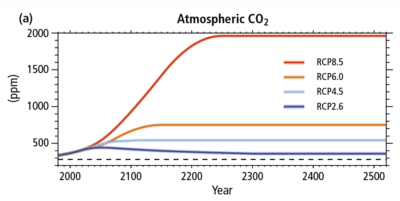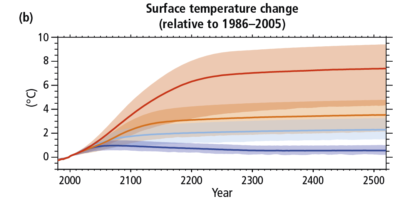The debate on reducing greenhouse gas emissions is hijacked by a simple trick of language
Talking about the cost of climate change mitigation misleads because it is an investment in economic terms if you simply understand it in the right context. The context of survival
The Basics
Some background and context so that the following analysis makes sense. Skip it if you already know about it.
Climate change is real and the evidence is overwhelming. There is unprecedented agreement amongst scientists that it is caused by human activity and especially from use of fossil fuels, land clearing and unsustainable agriculture
Two widely discussed targets for mitigation of climate change are to limit it to 1.5 or 2.0 degrees above the pre-industrial baseline. We have near enough to 1 degree already locked in. 4 degrees or more are locked in if we maintain current land use and fossil fuel consumption. See https://climate.nasa.gov/vital-signs/global-temperature/ for graphs and explanations.


These graphs from the Intergovernmental Panel on Climate Change show projected concentrations of CO2 [Top] and projected temperature increases [Bottom] under different emissions scenarios, extending to the year 2500. Note how it levels off over time as an equalibrium is reached. Below is another IPCC graphic showing four pathways to achieving a maximum 1.5 degree increase in temperature.

The environmental conditions in which humans evolved can exist with a CO2 level of 350 or less. We now have over 410 ppm and rising faster than at any time observed – ever.
Mitigation will therefore require reversing the increase. The graph below shows how this could play out.1


Biodiversity has already been severely impacted and the (usually cautious) UN has issued a clear and urgent warning that we are destroying our planet and potentially our future as a species – Humans are acting as their own comet to drive an extinction event of the order of that which killed off the dinosaurs The disruption caused by climate change is valued at 2.5 trillion USD by the London School of Economics. It found that in that with unchecked climate change, global financial assets were effectively overvalued today by $2.5tn, but that there was a 1% chance that the over valuation could be as high as $24tn2
The biggest losers if we mitigate climate change are the fossil fuel corporations (private and Government owned). The total stock market capitalisation of fossil fuel companies today is about $5tn – they are likely to have stranded assets if we mitigate climate change. Most of the losses will be stranded assets that used to be of value but are no longer saleable and therefore valueless.
Economic and socio-historical analyses point to dire consequences arising from water and food scarcity, flooding of low lying land, disease/plague and social unrest from combined disruption
The public debate on mitigation of climate change has been heavily focused on the cost of action to mitigate. There has been little discussion on the obvious issue of the cost to do nothing, or for that matter of doing too little. Fortunately there is some good academic research out there to draw upon.
Warfare
How much are we prepared to spend on warfare? Billions of dollars each year.
Why? To preserve a way of life and other reasons. Otherwise described as investing in civic security.
Perversely, mitigation of climate change reduces the likelihood of warfare and potentially saves billions off the Defence budget. Do we often think about the costs involved in military defence of borders and protection of resources? Not much. It is understood as necessary to protect our wellbeing. It may well become an additional cost of “adapting” to climate change. History tells us this is very likely.
Border control
How much are we prepared to spend on border protection? Billions of dollars, judging by what we have seen since the 1990s. Sometimes more than a million dollars per refugee is spent to keep them away. Let’s not consider how effective it is.
Why? Similar to Defence spending but specifically directed at preserving perceived lifestyle status quo.
Again perversely, climate change is a driver for immigration both formal and informal (not legal and illegal because that is a very open question in the case of asylum seekers). Simply stated, those who lose their homes form flooding and/or water and food shortage will wish to migrate to a place where there is greater opportunity. The more desperate the refugee the more extreme and urgent the attempts to migrate will be and persistent they will be.
Health
What resources are we prepared to put into health and medicine? The complicated answer is that it depends. To look after our own health there is a strong tendency to want someone else to look after it. To look after other people’s health – that is up to them. Effectively this drives massive investment in radical medical intervention for wealthy people and very little in prevention of chronic diseases (diabetes, cardiovascular disease, obesity etc). The dollar values for treatment of chronic diseases are astronomical in Australia. The healthcare budget is around 9% of GDP and chronic disease accounts for upwards of 25% of that.3
Why? It comes down to human nature and its preparedness to ignore non-immediate risk. A preparedness to pay a fortune for a cure but to not care about prevention.
There are some intriguing consequences here. Firstly the root causes of the chronic diseases I have used as examples (as well as many others) have at their core over consumption of highly processed, packaged and transported food. More than 30% more food than is needed being consumed by most adults and teenagers and the nutritional and environmental impact is increased through additional processing, transport, concentration on animal products (meat, dairy etc) and addition of sugar and salt. This is discussed more in the next section.
As a result the health budget (really sickness rather than health) is increasing at a higher rate than population growth. On average 1.5% more and mostly due to demand for new and expensive services. We really want to take heroic efforts to not die and restore mobility and lifestyle. We have smokers who demand the highest levels of treatment for the disease that they have essentially brought on themselves.
Food
What are we prepared to pay for food security? Quite a lot but nowhere near enough to actually ensure security of food production in a changing climate
Why? Food security has been the cornerstone of political power since agriculture became widespread. The fundamental premise of centralised, planned economies is to feed and protect the population in return for granting “the leader” power of life and death4 with different degrees of autocracy.
Climate change is highly disruptive for food production and there are only small regions of the planet that benefit from the warming (Iceland, Siberia, Greenland). Changes in rainfall patterns, including variability and intensity, are the most discussed factors affecting food production but there is another factor that overshadows the others as average and peak temperatures rise – the effect of evapo-transpiration.
Increasing temperature produces a corresponding increase in evaporation from soil and a greater effect on transpiration from plants in the temperature range between 20-30 degrees. Above 30, plants shut their pores to conserve moisture. Stronger winds associated with higher temperatures add to the increased loss of plant and soil moisture. This complex system is mitigated t some degree by increased CO2 concentrations. Nett effect is that with 1 degree of average temperature increase in the Canberra, part of Southern MDB, we observe an average increase of around 100mm evaporation between 1970 and 2010 using 10 year moving averages. This shortens the growing season (without irrigation) by 2 months and possibly more.
The costs for food production are the additional water required to keep plants alive and yield at viable levels. 100mm of water per hectare is 1 Ml and costs upwards of $200 as a one off purchase or upwards of $5,000 for a permanent entitlement purchase.
Water
Water loss is only recently being considered as an important factor in climate change. In fact, it could have the biggest impact. Evaporation rates 15-20% higher than 1990 levels can reduce growing seasons by as much as 2 months in Australia’s semi-arid regions. This feeds back into food production.
Historically, competition for water resources has been a cause of warfare and long term conflict. Reduced supply and increased demand is likely to result in increasing conflict. Feeding into the Warfare scenario.
Energy
The hotter it gets, the more energy is needed to keep people alive and more comfortable. The more that energy comes from fossil fuels the harder it will be to arrest and reverse what is happening with global heating.
The viable and easily achievable alternative of renewable energy is actually cheaper and more efficient to harvest than coal and gas sources of energy. Of course storage is an issue. Only if storage is not built. Nobody has an argument against storing water for when it is needed and the same thinking should apply to energy/electricity.
Extinction
In the 1950s through to the late 1980s there was a real threat that we as a species could wipe ourselves off the planet with nuclear weapons. We found ways to avoid that. When we discovered that Chlorofluorocarbons were creating holes in the ozone layer, we stopped using them rather than be subjected to cancer-generating radiation.
Now we are faced with the possibility of destroying our ecosystem through global heating and we can show the same level of commitment to overcoming this problem as well. Trouble is that the process of warming has a lag between the pollution of the atmosphere with greenhouse gasses and the consequences. When the consequences are 20-30 years in the future it is easy for it to be “someone else’s problem”. Tragedy of the CommonsThe tragedy of the commons is a term used in social science to describe a situation in a shared-resource system where individual users acting independently according to their own self-interest behave contrary to the common... More scenarios step in. Short term gains override potential disaster in the future.
This means is that we must see mitigation of global heating as an investment – not as a cost
